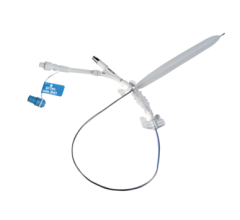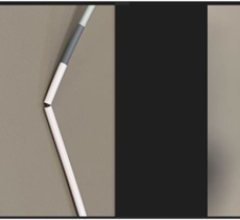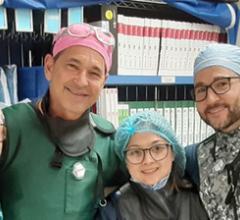
Several paclitaxel drug-eluting balloons (DEBs) are currently available on the European market, and several others are in development. There are currently no DEBs available in the United States.
In 2009, Invatec launched four DEBs in Europe. The In.Pact Amphirion is designed to treat atherosclerosis in arteries located below the knee. The In.Pact Admiral targets the superficial femoral arteries. The In.Pact Pacific is a 0.018-inch peripheral DEB. The peripheral products offer a size range from 3 to 7 mm diameters, and balloon lengths ranging from 40 to 120 mm. The In.Pact Falcon also was released for coronary vessels.
Medtronic purchased Invatec earlier this year to expand its offerings in peripheral artery disease (PAD) treatments.
B. Braun introduced its SeQuent Please coronary DEB last year in Europe. It uses the Paccocath balloon coating matrix licensed through Bayer AG.
The Dior DEB made by EuroCor was the first DEB to earn a CE mark clearance in 2007. The drug is embedded in its microporous balloon surface, which elutes during a one-minute balloon expansion. A newer generation balloon uses shellac as a carrier.
Aachen Resonance GmbH offers the Elutax DEB in Europe for coronary and small vessels. It also uses a microporous surface.
The Acrostak Genie catheter drug delivery system has two small balloons at the distal and proximal ends of the device. They are inflated under low pressure and the occluded area is flushed with paclitaxel. After an exposure of two minutes, studies revealed the growth of stenosis is permanently inhibited.
Works in Progress
In January 2009, Micell Technologies entered into an agreement with EuroCor to develop a new generation of DEBs. The specific terms of the agreement were not disclosed, but the deal is likely aimed at creating an improved Dior DEB. Micell has developed a unique bioabsorbable polymer coating that is absorbed concurrently with the drug delivery. The technology allows both the polymer and drug to be eliminated within 90 days.
The Genesis DESA (Drug Eluting Scoring Angioplasty), from Genesis Technologies, uses a nitinol mesh braid over the DEB. The braid is supposed to create microfractures in the plaque for better drug delivery.
In the summer of 2009, Lutonix Inc. began patient enrollment for its three simultaneous first-in-human clinical trials to test its Lutonix drug coated balloon catheter. The PERVIDEO I Registry is investigating the DEB’s use in treating coronary bare metal stent in-stent restenosis. The LEVANT I Trial is examining its use in preventing restenosis in the femoropopliteal arteries. The Lutonix De Novo Pilot Study will assess the interaction between bare metal stents and the DEB.
Medrad’s Cotavance DEB uses the Paccocath balloon coating matrix technology from its parent company, Bayer AG. Medrad has submitted a clinical trial request with the U.S. Food and Drug Administration (FDA) and hopes to begin the trial in late 2010.
Cook Medical is currently in European trials with its Advance PTX drug-eluting balloon.
Boston Scientific said it also is developing a paclitaxel-eluting DEB to treat peripheral vessels.
DSM Biomedical develops both medical device coatings and drug delivery coatings, which it is using to create new DEBs.



 June 13, 2024
June 13, 2024 








